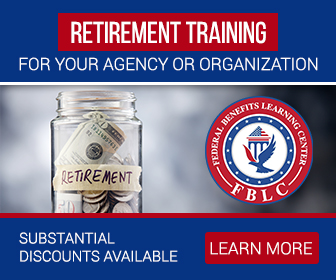Weekly Newsletter

Weekly Newsletter:The Office of Personnel Management (OPM) is moving aggressively towards implementing the final rule that will govern the regulations and guidelines for phased retirement. OPM released its draft plan of phased-retirement in 2013. Persons eligible for retirement who meet other criteria will essentially be able to work part-time while receiving half of their pension. The previous pay rules impacting rehired annuitants under this scenarior will not apply.
- Also Read: FAA, Law Enforcement, and Special Federal Employee Categories—Here’s What Makes Their Retirement Unique
- Also Read: Blending Private and Public Sector Retirement Plans Is Complicated—Here’s Where Couples Get It Wrong
- Also Read: The Silent Shift in Postal Service Retirement Benefits That Could Change Everything by 2026
One of the most important components of phased retirement is that retirees participating in the program must commit approximately 20 percent of their time mentoring employees to help them acquire the knowledge needed to preserve institutional knowledge.
Now that the retirees are about to leave the building OPM wants to bring them back or keep them so that when they finally leave for good, lesser experienced employees can step up to the plate. The move is a move and some movement is always better than inertia; but the government might be better served if OPM were to promote the idea of effective succession planning across all agencies as a normal an ongoing part of operations.
As a part of the overarching strategic goals of the federal government, all Human Resources Offices should provide performance standards that measure and grade organizations on effective succession planning implementation.
Students are poised to receive the benefit of a lesson while the teacher is still in the classroom, not just before she is about to exit. The goals of individuals leaving a venue are significantly different than those of individuals who hold a 20 year lease on a venue. It just makes sense to pair experienced workers with less experienced workers as an ongoing strategy in managing and protecting the institutional knowledge of the federal workforce.
The responsibility of management is to design and implement performance standards that incorporate the passing-on of critical knowledge necessary to promote and support the continuity of services to the nation and the world. The American workforce is currently structured to support the notion of – indispensability. If one does not make one’s self indispensable by not sharing knowledge and information, then one’s job security maybe be threatened. Such thinking has an outcome of counterproductivity.
Human Resources professionals must work to change that dynamic in the workforce and promote the immesurable value of team and the passing-on of knowledge. We reference the term -institutional knowledge- because it belongs to the institution and not to the individual. Skills we acquire that afford us the ability to gain knowledge sufficient to do a job – must be passed on.
Knowledge is meant to be passed on in workforces all over America to fuel the pipeline with the next generation of committed, dedicated civil servants. People coming and people going is a natural progression of the work-cycle from hiring to retiring. What we amass (knowledge) in the workforce is without purpose and value if not passed-on during our work careers so that when we leave, when we retire – we do it knowing that our legacy is – what we knew, what we learned – we passed it on so that the nation continues to flourish. This concludes our weekly newsletter.
“When you get – give. When you learn – teach” – Dr. Maya Angelou.
P. S. Always Remember to Share What You Know.
Dianna Tafazoli











